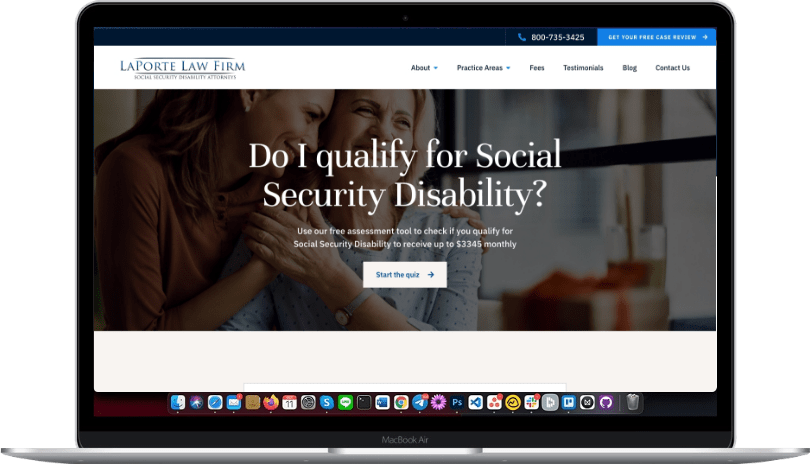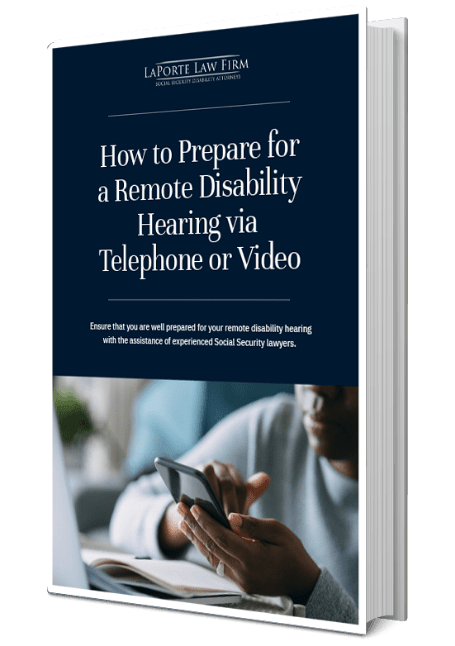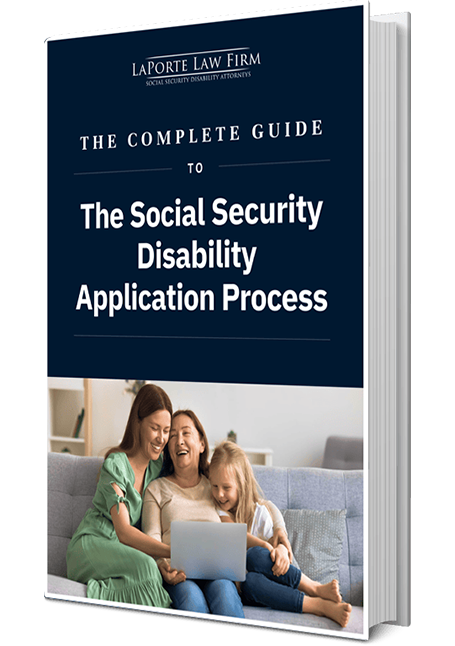
Social Security disability benefits are a vital lifeline for millions of Americans who find themselves unable to work due to a disability. While many are aware of the financial relief Social Security disability provides, the details surrounding the medical insurance associated with disability can often be murky and difficult to understand.
Understanding the medical insurance benefits available to you through Social Security disability is crucial for ensuring that you receive the comprehensive support you need. In this guide, we’ll break down the types of health insurance you are eligible for and how to access them.
Understanding Social Security Disability Programs
Social Security disability benefits provide monthly financial support to individuals who are unable to work due to a qualifying disability. The Social Security Administration (SSA) offers two different types of disability benefits: Social Security Disability Insurance (SSDI) and Supplemental Security Income (SSI).
SSDI is available to individuals who have worked and paid into the Social Security system through payroll taxes. SSI is a needs-based program designed to help disabled individuals who have limited income and resources. Both programs aim to provide essential assistance to those whose medical conditions prevent them from maintaining gainful employment.
Both SSDI and SSI use the same definition of disability when determining eligibility for benefits. A person is considered disabled if they have a medically determinable physical or mental impairment that prevents them from engaging in substantial gainful activity (SGA), and the condition is expected to last at least 12 months or result in death. While the financial and work history requirements differ between the two programs, the medical standard for disability remains the same.
Overview of Social Security Disability Insurance
As mentioned, SSDI is a federal program that provides monthly benefits to people who are unable to work due to a long-term disability. It is designed for individuals who have worked and paid Social Security taxes long enough to earn sufficient work credits.
Eligibility criteria for SSDI
To be eligible for SSDI benefits, a disabled individual must meet the SSA’s nonmedical criteria: claimants must have earned enough work credits through jobs where they paid Social Security taxes. Most people need 40 work credits to qualify, 20 of which must have been earned in the 10 years prior to becoming disabled. Generally, this means that you must have worked for 5 of the last 10 years before your disability began. Younger workers may qualify with fewer credits.
The application process involves submitting detailed medical records, work history, and other supporting documents to the SSA. SSDI is specifically intended for individuals who have a sufficient work history and can no longer continue working due to their disabling condition.
Benefits and limitations of SSDI
SSDI benefits are calculated based on your average lifetime earnings from jobs where you paid Social Security taxes. The SSA uses a formula that considers your average iIndexed monthly earnings (AIME) and applies it to a benefit formula to determine your primary insurance amount (PIA), which is the base amount of your monthly benefit. The exact amount varies for each person, but as of 2025, the average SSDI monthly benefit is approximately $1,582.
Payments do not begin immediately; there is a mandatory five-month waiting period from the date the SSA determines your disability began. After this waiting period, eligible individuals will start receiving monthly payments. SSDI benefits can continue for as long as you remain medically disabled and unable to work. If your condition improves and you are no longer considered disabled, benefits may stop. If your disability continues, SSDI benefits will transition to retirement benefits when you reach your full retirement age.
Overview of Supplemental Security Income (SSI)
Like SSDI, SSI is a federal program that provides financial assistance to individuals who are aged, blind, or disabled and have limited income and resources. But unlike SSDI, SSI is needs-based and does not require a work history to qualify.
Eligibility criteria for SSI
To qualify for SSI, you must meet both medical and nonmedical criteria. Because SSI is a needs-based program, applicants must have limited income and resources. In 2025, the resource limit is $2,000 for an individual or $3,000 for a married couple. This includes assets such as cash, bank accounts, and property.
However, not all assets or income count toward these limits. There are certain exceptions. For example, the SSA does not count your primary home, one vehicle used for transportation, personal belongings, or household goods. Some types of income are also excluded, such as a portion of earned income, food assistance (e.g., SNAP benefits), and certain types of help from nonprofit organizations. These exclusions help ensure that individuals who are truly in financial need can still qualify for SSI even if they receive limited support or own essential property.
Benefits and limitations of SSI
SSI benefit amounts are based on a federal maximum, which is adjusted annually. In 2025, the federal maximum SSI payment is $967 per month for an individual and $1,450 for a married couple. However, the actual amount you receive may be lower or higher, depending on factors such as your income, living arrangements, and any state supplements.
Many states offer supplemental payments in addition to the federal SSI amount. For example, California provides a state supplement, which can significantly increase your total monthly benefit. In 2025, an individual living independently in California can receive over $1,206.94 per month when combining federal and state payments.
However, SSI benefits can be reduced if you have other sources of income. The SSA counts most types of income, such as wages, pensions, or even in-kind support (e.g., someone else paying your rent or providing food and shelter). If you’re living with someone who helps cover your basic needs, the SSA may reduce your SSI payment to account for that support. These income-related adjustments ensure that SSI benefits go to those with the greatest financial need.
Insurance Benefits Associated with SSDI
Individuals who qualify for SSDI are generally eligible for Medicare coverage after a 24-month waiting period. Below is a list of key Medicare benefits available to SSDI recipients.
Medicare Coverage for SSDI Recipients
Medicare is a federal health insurance program that primarily covers people aged 65 and older, but it also provides coverage to certain younger individuals with disabilities, including those on SSDI.
Typically, Medicare eligibility for SSDI recipients begins after a 24-month waiting period, which starts from the first month they are entitled to receive SSDI benefits, not the date they applied or were approved. This entitlement date usually comes five months after the SSA determines the person’s disability began, meaning the total wait for Medicare can be around 29 months from the actual onset of disability.
However, there are exceptions to this rule. Individuals with ALS (amyotrophic lateral sclerosis) qualify for Medicare immediately upon SSDI approval, with no waiting period. Those with end-stage renal disease (ESRD) may also qualify for Medicare earlier than the standard 24 months, depending on their treatment, such as starting dialysis or receiving a kidney transplant.
Due to the wait times involved with disability cases, many beneficiaries are entitled to Medicare by the time their case is approved, since the case has taken longer than the 24-month Medicare waiting period.
Medicare premiums
In 2025, the standard Medicare Part B premium is $185. If you are single, or married and file a joint tax return, the following chart applies to you:
| Modified Adjusted Gross Income (MAGI) | Part B monthly premium amount | Prescription drug coverage monthly premium amount |
|---|---|---|
| Individuals with a MAGI less than or equal to $106,000 Married couples with a MAGI of $212,000 or less |
2025 standard premium = $185.00 | Your plan premium |
| Individuals with a MAGI above $106,000 up to $133,000 Married couples with a MAGI above $212,000 up to $266,000 |
Standard premium + $74.00 | Your plan premium + $13.70 |
| Individuals with a MAGI above $133,000 up to $167,000 Married couples with a MAGI above $266,000 up to $334,000 |
Standard premium + $185.00 | Your plan premium + $35.30 |
| Individuals with a MAGI above $167,000 up to $200,000 Married couples with a MAGI above $334,000 up to $400,000 |
Standard premium + $295.90 | Your plan premium + $57.00 |
| Individuals with a MAGI above $200,000 and less than $500,000 Married couples with a MAGI above $400,000 and less than $750,000 |
Standard premium + $406.90 | Your plan premium + $79.50 |
| Individuals with a MAGI equal to or above $500,000 Married couples with a MAGI equal to or above $750,000 |
Standard premium + $443.90 | Your plan premium + $85.80 |
If you are married but file separately from your spouse, the following chart applies to your Medicare premium:
| Modified Adjusted Gross Income (MAGI) | Part B monthly premium amount | Prescription drug coverage monthly premium amount |
|---|---|---|
| Individuals with a MAGI less than or equal to $106,000 | 2025 standard premium = $185.00 | Your plan premium |
| Individuals with a MAGI above $106,000 and less than $394,000 | Standard premium + $406.90 | Your plan premium + $78.60 |
| Individuals with a MAGI equal to or above $394,000 | Standard premium + $443.90 | Your plan premium + $85.80 |
Insurance Benefits Associated with SSI
If you qualify for SSI, you’re usually also eligible for Medicaid, a program that offers vital health coverage with little to no cost. Here are some of the key Medicaid benefits that can help support your health and well-being.
Medicaid access for SSI recipients
In most states, people who receive SSI are automatically eligible for Medicaid without needing to apply separately. These states, known as “1634 states,” have an agreement with the SSA to use SSI eligibility as the basis for Medicaid enrollment. When the SSA determines someone qualifies for SSI due to age, blindness, or disability and limited income, that person is also automatically enrolled in Medicaid.
Most states, including California, Florida, and New York, are 1634 states where the process is automatic, while states such as Connecticut and Ohio require individuals to apply for Medicaid separately.
Dual eligibility: SSDI and SSI
Individuals with very low income and limited resources may receive both SSI and SSDI if they meet the criteria for both programs. SSDI is based on a person’s work history and payroll tax contributions; to qualify, an individual must have a sufficient number of work credits and a qualifying disability. However, SSDI benefits alone may be modest, especially for people who had low wages or a short work history, and might not be enough to lift them above SSI’s income limits.
If their SSDI payments are low and they also have limited assets (generally no more than $2,000 for an individual), they may qualify for SSI to supplement their income. This situation is referred to as receiving concurrent benefits — getting both SSI and SSDI at the same time. People receiving concurrent benefits may also qualify for Medicare (after a 24-month waiting period from the start of SSDI) and Medicaid (through SSI, often automatically), giving them access to a broader range of health coverage.
Combining Medicare and Medicaid benefits
Some individuals, particularly those who are elderly or have disabilities and low income, may qualify for both Medicare and Medicaid. Medicare covers services such as hospital stays, doctor visits, and preventive care for people aged 65 and older or those with certain disabilities. However, Medicare often involves out-of-pocket costs such as premiums, deductibles, and co-pays, and it doesn’t cover everything, such as long-term care.
Medicaid, a joint federal and state program for people with low income, can help fill these gaps. For dual eligibles, Medicaid may pay for Medicare premiums, co-pays, and deductibles, and may also cover services not included in Medicare, such as long-term care or personal care services. This combined coverage helps ensure that individuals with significant medical needs and limited financial resources can access comprehensive healthcare with reduced out-of-pocket costs.
Applying for SSDI and SSI Benefits
To apply for Social Security Disability benefits, individuals can start the process either through the SSA website, by phone, or in person at a local SSA office. The application requires detailed information about the applicant’s medical condition, work history, and daily functioning. Once the application is submitted, the SSA reviews it to determine if the person meets the basic eligibility requirements, including having a qualifying disability and sufficient work credits for SSDI or limited income and resources for SSI.
If the initial criteria are met, the case is sent to a state Disability Determination Services (DDS) agency, where medical evidence is reviewed and, in some cases, additional exams are scheduled. The decision process can take several months. To learn more about the Social Security disability application process, you can read our free eBook here.
Navigating appeals and denials
The Social Security disability appeals process allows individuals to challenge a denial of benefits through several stages. The first step is a Request for Reconsideration, where a new reviewer at DDS reevaluates the claim, including any new evidence submitted. If the claim is denied again, the next step is a hearing before an administrative law judge (ALJ), where the applicant can present their case in person, often with medical or vocational expert testimony. If the ALJ denies the claim, the applicant can request a review by the Appeals Council, which may uphold, reverse, or remand the decision. If the Appeals Council also denies the claim, the final step is to file a lawsuit in federal district court.
Legal assistance, such as from an attorney or qualified representative, is especially helpful during the ALJ hearing and beyond, as these stages involve presenting evidence, questioning witnesses, and understanding complex legal standards. Representation can significantly improve the chances of a successful outcome. To learn more about the hearing process, you can download our free eBook here.
Knowing which medical coverage you qualify for can change everything. LaPorte Law Firm is here to help SSDI and SSI recipients unlock the full range of Medicare and Medicaid benefits — reach out and get the clarity you need today.
FAQs
When someone qualifies for disability benefits, they may also become eligible for key types of public insurance coverage that help with healthcare and related costs:
- Medicare: After receiving SSDI for 24 months, beneficiaries automatically become eligible for Medicare, the federal health insurance program. Medicare includes:
- Part A (hospital insurance): Covers inpatient hospital stays, skilled nursing facilities, and some home healthcare
- Part B (medical insurance): Covers outpatient care, doctor visits, preventive services, and medical equipment
- Optional Part D (prescription drug coverage): Can be added for help with medication costs
- Medicaid (for some individuals): People who receive SSI or both SSI and SSDI may also qualify for Medicaid immediately, depending on their state. Medicaid can help cover services Medicare doesn’t, such as long-term care, and assist with premiums, deductibles, and co-pays.
When someone receives SSDI benefits, certain family members may also be eligible to receive benefits based on that person’s work record. These family members are called auxiliary beneficiaries. Auxiliary beneficiaries may be eligible for additional benefits, including monthly benefit amounts. However, family members of disability recipients do not become entitled to health insurance benefits, including Medicare or Medicaid benefits. You can learn more about auxiliary benefits here.
If you receive SSI or you receive both SSDI and SSI, you are typically automatically enrolled in Medicaid in most states, with no separate application required. However, if you receive SSDI only, you are not automatically eligible for Medicaid and must apply through your state’s Medicaid office or via HealthCare.gov if your state uses the federal platform. Eligibility will depend on your income and assets, as Medicaid is a needs-based program. Many people on SSDI, especially during the 24-month waiting period for Medicare, apply for Medicaid to get health coverage in the meantime. You’ll need to provide information about your disability benefits, financial situation, and possibly medical records. If you’re unsure about your eligibility or how to apply, local Social Security offices, Medicaid agencies, or legal aid services can offer guidance.
















